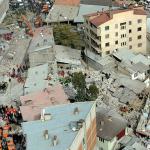Improving Agricultural Statistics in the COMCEC Region
The analytical study titled “Improving Agricultural Statistics in the COMCEC Region” has been commissioned by the COMCEC Coordination Office specifically for the 3rd Meeting of the COMCEC Agriculture Working Group, to be held on April 3rd, 2014 in Ankara, with a view to enriching the discussions during the aforementioned Meeting. The objective of the study is to review and analyze the state of agricultural statistics in the COMCEC Region, with respect to organization, coverage, resources, methodology, timeliness and availability, identify the main constraints and propose steps and policies to improve them. The first chapter is devoted to a discussion on why agriculture and agricultural statistics are important for the COMCEC Member Countries and what the new challenges are. The second chapter starts with a review of different indicators developed and used by various organizations to measure the capacity of the statistical systems, followed by presentation of the empirical findings of the study based on the results of the Standard Self Assessment Questionnaire (SSAQ) conducted. The chapter ends with an Index of Agricultural Statistics Development (IASD) constructed for the COMCEC Member Countries. Chapter three presents eight case studies which review the general state of agricultural statistics in the selected COMCEC Member Countries. The final chapter summarizes the main findings of the study and presents possible areas of cooperation and policy recommendations.
INDEX OF AGRICULTURAL DEVELOPMENT (IASD)
IASD is a weighted average of six state dimensions (and their sub-dimensions) and is used to assess the relative state of development of agricultural statistics in the COMCEC Member Countries. The six dimensions are the statistical environment (legal, institutional), resources (financial, human, physical), as well as methodology (classifications, sample frameworks), outputs (coverage), timeliness and availability to users (dissemination). IASD is first presented for 36 member countries which returned SSAQ and then projected to all of the 57 COMCEC Members.
MAIN CONCLUSIONS
-
The need for agricultural statistics is increasing at the domestic and international levels. The quantity of agricultural statistics produced is increasing in the COMCEC Member Countries. Nevertheless, agricultural statistics in the COMCEC Member Countries are far from meeting the needs of the users.
-
Response rates of the COMCEC Members to the questionnaires for international databases in agricultural statistics are falling in line with developing countries as well as the developed world although the reasons for non-response differ.
-
Based on the IASD nine of the COMCEC Members are classified as well-developed agricultural statistics. Eleven have been classified as fairly developed agricultural statistics open to limited improvement. The third group of seventeen COMCEC Member Countries has less developed agricultural statistics systems and need major improvement. The remaining twenty COMCEC Member Countries have severe problems with their agricultural statistics and need serious improvement efforts
-
The SWOT analysis of the case studies show that the main weaknesses of the agricultural statistics systems in COMCEC Member Countries are poor organization, lack of resources and limited scope of statistics. Existence of a legal base, regular budget allocations, well-qualified staff, awareness of the issues, openness to international collaboration were stated as the strengths. As far as threats are concerned, lack of interest in statistics, size of informal sectors and lack of coordination are among the top issues raised. Finally, the case study members mentioned that increasing donor support, developments in information, communication and data collection technologies, periods of main surveys and censuses, and growth of agricultural markets as opportunities to be exploited.
MAIN RECOMMENDATIONS
-
The COMCEC Member Countries are diversified with regards to resources and technical capacities. Therefore, this diversification should be utilized as a cooperation opportunity among the Member States.
The COMCEC Member Countries are already involved in capacity building activities as part of SESRIC, various regional bodies like AFCAS and Improving Agricultural Statistics in the COMCEC Region 2 APCAS, as receivers of support provided by FAO, Regional Development Banks, EU and World Bank. These should continue with more active participation.
The Member Countries should be encouraged to prepare a report on the state of agricultural statistics in their countries.
The Member Countries are recommended to invest in building comprehensive and integrated online databases for agricultural statistics.
COMCEC Member Countries should make every effort to integrate agricultural statistics into their National Statistical Systems. COMCEC Members are recommended to conduct a workshop to discuss integration and coordination issues, in which heads of statistics and agricultural statistics participate. This can be the subject of one of the annual meetings of the OIC-Statistics Commission.
Assessment of the agricultural statistics systems in the COMCEC Member Countries should be a continuous process. The SSAQ and IASD should be updated regularly with better information.
The IASD may be transferred to a true selfassessment system, where the index scores are computed by the countries, and peer reviewed and finalized.




